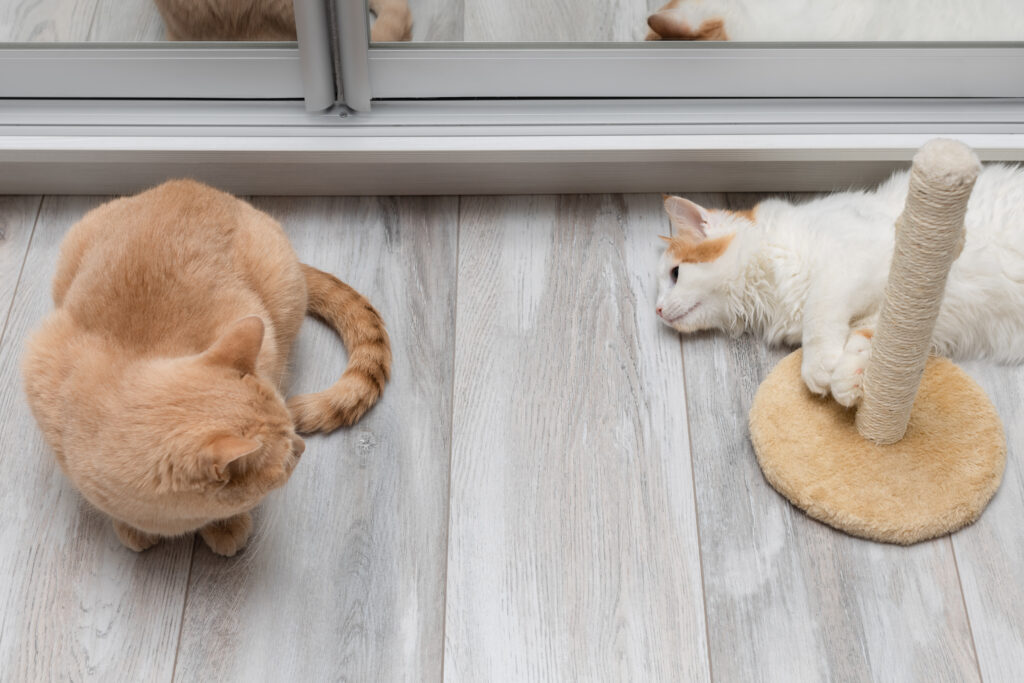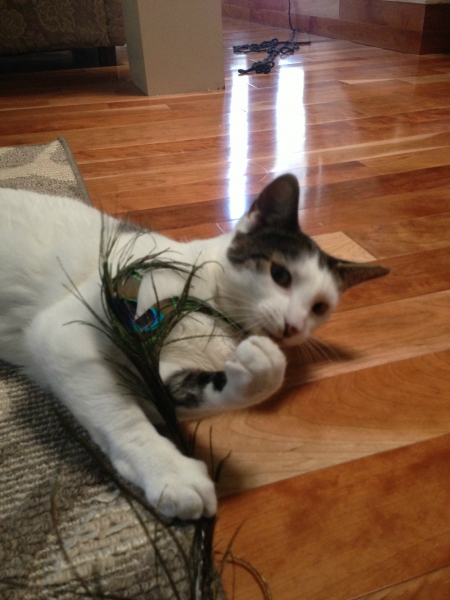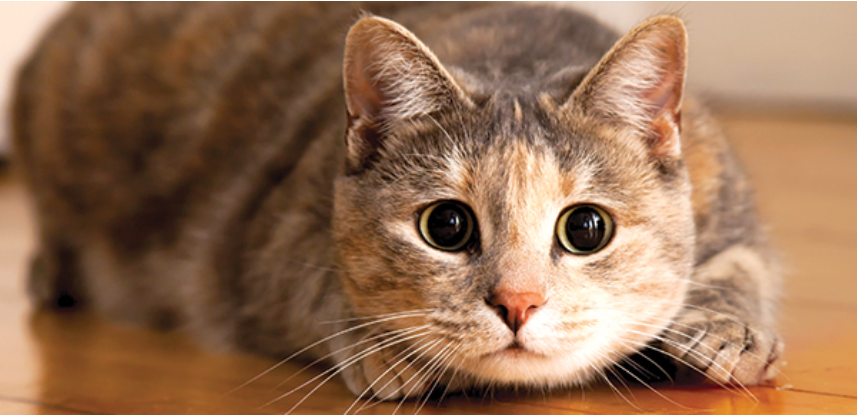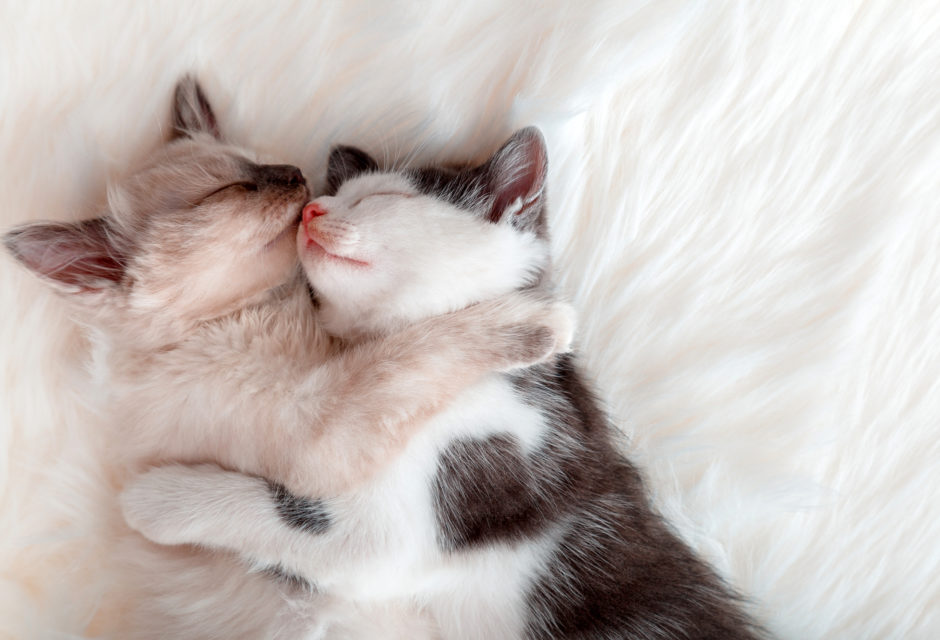

Does Your Cat Need A Friend? Introducing a Second Cat
How to tell if your cat wants a buddy, how to choose the right friend, and how to arrange a meet-cute between them
In theory, there’s no such thing as too many cats (okay, barring hoarding scenarios). After all, we’re talking about more cat kisses, cat muffins, and catnaps. But how do you decide if you and your current feline are actually ready for a new cat?
Before you approach your cat with the proposition of a new family member, ask yourself a few questions. Do you have time for a second cat? Why do you want one? Is it for you, or is it because you think your current cat needs a companion? Whatever the reason, it’s important to take into account that no matter how many cats you bring home, they will all require plenty of attention from you. So unless you have time to give, you’re probably better off with your one and only.
Now that you’ve figured that out, how can you tell if your cat is ready? Unfortunately, this is rather tricky to gauge. There are no clear-cut signs to indicate that your cat will be accepting of another cat. While it is possible to test your cat’s reaction to other cats by asking your friends or neighbours to bring their cats over so you can attempt to introduce the two (preferably through a barrier like a closed door or a glass window), your cat’s reaction from the encounter will be inconclusive. Cats need time to make up their minds about each other and this can take days, weeks or even months. Cats can also change their minds very quickly so a single encounter will not tell you much.
Still, if you’ve got your heart set on adding to your brood, there are ways to prepare to make the transition easier on both you and your cat.
Picking “the One”
The first step is to create a profile for the cat you want to adopt. Important factors to consider are the age and personality you seek, both of which should be compatible with your own cat’s age and temperament. For example, if your cat is an adolescent, he’ll probably enjoy the company of a cat of similar age or younger. But if your cat is older, his idea of fun is most likely napping by the window, and a kitten would not be compatible with his leisure plans. While it is easy to reason that a kitten might help your old fella “get more active and lively,” the reality is that the mismatch of energy levels between the two will likely be equally stressful for both.
If your cat is shy, getting a slightly confident cat as the second cat might help your shy cat become more curious and brave. Since cats tend to mimic each other, your sassy cat might learn the art of taking it down a notch from your shy cat. This is what we would call a balance. It’s unwise to get two shy cats as this could lead to them bonding with each other as opposed to bonding with you. Two confident cats could step on each other’s toes, leading to stand-offs.
 The Meet-Cute
The Meet-Cute
Now that you’ve got a rough idea of the kind of cat you’d like to adopt, it’s time to set up your home and make it cat-ready!
First, stake out your existing cat’s safe spaces—these would include his sleep area, rest area, play area, and hiding spots. Set up litter boxes, scratching posts, cat trees, and his food and water bowl. Your resident cat will have his safe spaces as well as the rest of the house to roam in, except for the new cat’s safe space.
Determine your new cat’s safe space—this could be a bedroom that the resident cat does not frequent. Set the room up similar to your resident cat’s safe space.
Place your new cat in his safe space as soon as you bring him home. Do not attempt to introduce both cats right away. We want them to start off on the right foot. Over the next few days, let him settle into his new home and make sure to give him ample time to bond with you alone within the safe space. It’s also important for your resident cat to get the same amount of time with you.
You can usually tell if your new cat is settling in well by how excited he is to see you every time you come to visit him or by how well he’s eating. A stressed cat will seldom touch his food.
Next Steps for Introducing a Second Cat
Once sufficient time has passed, usually anywhere from a few days to a few weeks (depending on your cats’ personalities), and both cats seem content, it is time to allow for a slow introduction. You can start by giving them each an item that contains the other one’s scent, so they can get familiar. If both cats seem receptive to the scent swap, it’s time to attempt a room swap and take scent swapping to the next level. Swap them into each other’s safe spaces for a few minutes every day, but don’t attempt to introduce them face-to-face just yet.
Next, create positive associations. Most cats are food motivated; the key is to find out what food motivates them. Once you do, feed them on either side of a closed door so that they can smell each other when eating. This automatically helps them associate the other’s presence with a tasty meal, which becomes the reward. You can eventually crack open the door a little during meal times and monitor your cats’ responses to each other, continuing to open the door a little bit further based on their reactions.
Once you’ve accomplished this, another positive association experience could be playtime!
“It’s important for both cats to get enough stimulation while at home,” says Sarah Welsh, Feline Support Liaison at the San Francisco SPCA. “The more stimulation they get, the less likely they’ll be to get into fights with each other. Puzzle toys, for instance, are a great way to keep them busy.”
It’s never too early to start setting the stage for future integrations. If you currently have a single kitten, Sarah recommends starting different socialization activities right away. Early socialization will help your kitten adapt better to changes—like the addition of a new cat to the household—later on in life. “By socializing your kitten early, she’ll be much more likely to accept change than, say, your five-year-old cat (that wasn’t socialized). Start taking your kitten to friends’ places, give her sufficient playtime with other kittens, and expose her to traveling in cars. The more your kitten can be around other cats when she’s younger, the easier she’ll adjust to future changes.”
That said, don’t let your cat’s potential lack of early socialization experiences deter you. With patience and the above game plan you could soon be living in a happy multi-cat household.
Join the newsletter and never miss out on cat content again!
"*" indicates required fields
By clicking the arrow, you agree to our web Terms of Use and Privacy & Cookie Policy. Easy unsubscribe links are provided in every email.





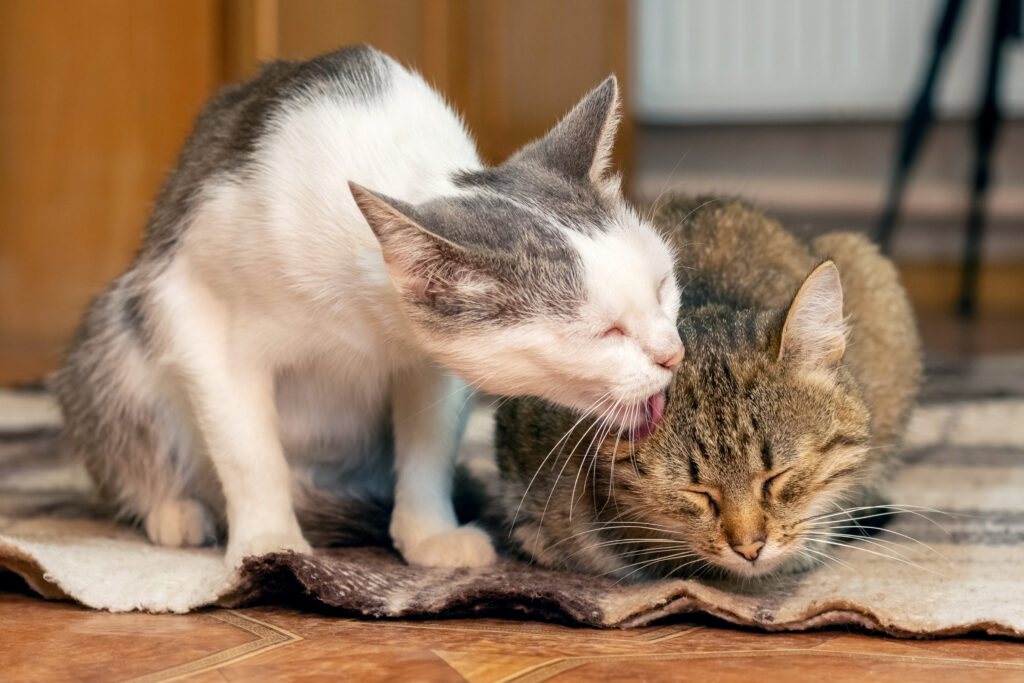
 The Meet-Cute
The Meet-Cute